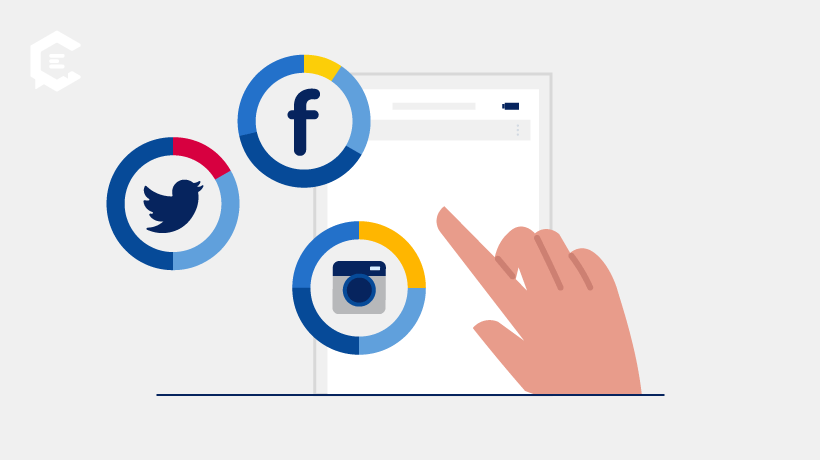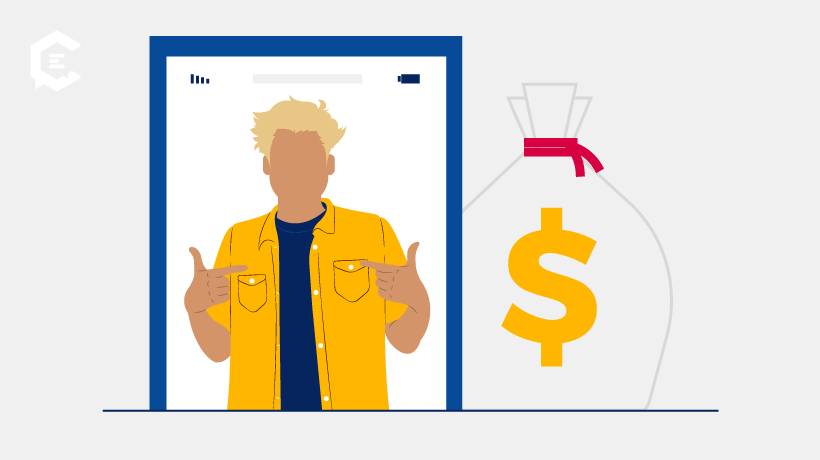Not too long ago, influencer marketing was reserved mostly for A-listers. Now, influencer collaborations of all sizes reshape how brands connect with audiences.
Whether macro (100,000 to 1 million followers) or micro (10,000 to 100,000 followers), influencers help your marketing impact through authentic connections with their community.
In this article, we’ve curated a list of the top statistics to show how influencer marketing can expand your reach online and drive engagement with your target audience.
Understanding Influencer Marketing
Fundamentally, influencer marketing is a content strategy that uses individuals with dedicated social media followings to endorse a product or service.
Many brands collaborate with them to leverage their established credibility and reach within their community, often through platforms like Instagram, TikTok, and YouTube. Influencers effectively bridge the gap between companies and their target audience.
Unlike traditional advertising, influencer marketing capitalizes on influencers’ personal connection with their followers, leading to more organic and impactful engagements. It’s a fusion of old-school celebrity endorsement with a contemporary, digital twist.
The type of influencer you partner with depends on your brand. Here are the four types:
- Mega: 1M+ followers
- Macro: 100K – 1M followers
- Micro: 10K – 100K followers
- Nano: 10k or less followers
It’s up to you to decide if influencer marketing is right for your business. If unsure, check out the statistics below to help you decide.
General influencer marketing statistics
- Over half of Gen Z and Millennial consumers (53%) say they would consider buying products based on their favorite influencers’ recommendations. (Traackr)
- In 2024, 84.8% of marketers saw influencer marketing as effective — a slight increase from 83% the previous year but a drop from 90% in 2022. (Influencer Marketing Hub)
- 63.2% of brands worked with the same influencers across different campaigns in 2024, up from 61% in the previous year and 57% in 2022 — a clear indication that brands prefer building relationships with familiar influencers vs. repeating the influencer selection process for each campaign. (Influencer Marketing Hub)
- In a global 2024 survey of brands, marketing agencies, PR agencies, and other professionals, 37.6% of respondents reported that their organizations collaborated with up to 10 influencers, while 14.7% said they worked with over a thousand. (Statista)
- Brands are working with 33% more micro-influencers each year. (Statusphere)
- The primary goal of influencer campaigns is to create user-generated content (56%). Driving sales (23%) ranks as a secondary objective. (Influencer Marketing Hub)
- On the micro-influencer marketing side of the equation, the top goals for campaigns are brand awareness (65%), repurposing content for ads (22%), and increasing in-store sales (13%). (Statusphere)
- Within the last 12 months, 87% of the content that brands requested from micro-influencers was in the form of short videos, like TikToks and Instagram Reels. (Statusphere)
- The most effective micro-influencer videos on TikTok and Instagram Reels tend to be 20-40 seconds long. (Statusphere)
- 63% of marketers plan to use AI in executing their influencer campaigns (Influencer Marketing Hub)
- 55.8% of those brands will use AI for influencer identification, 18.6% for locating and distributing relevant content, and 5.7% to detect bogus influencers and engagements. (Influencer Marketing Hub)
- 62.2% of marketers reported using virtual influencers in 2024, up from 60.4% in 2023. (Influencer Marketing Hub)
- In the U.S., 52% of social media users follow a virtual influencer. (Harvard Business Review)
- 23.8% of social media users aged 16-64 watch influencer videos and vlogs each week. (Meltwater)
- 22% of marketers say influencer marketing is their most cost-effective customer acquisition channel. (Convince & Convert)
- Over half of influencers face discrimination online, with TikTok being the most problematic platform, accounting for nearly 60% of reported incidents. (Influencer Marketing Hub)
- Videos with voiceovers get more views on TikTok and Reels than those without. (Statusphere)
Influencer marketing statistics about growth and rates
- Influencer marketing has grown from $1.7 billion in 2016 to an estimated $24 billion by the end of 2024. This includes a notable 29% jump from $16.4 billion in 2022 to $21.1 billion in 2023, reflecting strong ongoing growth despite economic challenges. (Influencer Marketing Hub)
- TikTok leads social platforms in engagement, with rates reaching 15.04% for smaller accounts and 10.53% for million-plus followers, far outperforming Instagram’s 2.05% average and YouTube’s highest of 3.47%. (Influencer Marketing Hub)
- Brands prefer to work with small (nano – 44% and micro – 26%) influencers instead of expensive macro-influencers (17%) and celebrities (13%) (Influencer Marketing Hub)
- The top three highest-paying platforms for influencers are YouTube, Instagram, and TikTok. (Influencer Marketing Hub)
- On Instagram, nano-influencers charge between $10-100 per post; micro-influencers charge between $100-500 per post; macro-influencers charge between $5,000-$10,000 per post (Influencer Marketing Hub)
- On TikTok, nano-influencers charge between $5-$25 per post; micro-influencers charge between $25-$125; macro-influencers charge between $1,250-$2,500 (Influencer Marketing Hub)
Influencer marketing statistics about budgets and income
- In a 2024 global survey of marketing agencies and brands, 22.4% of respondents allocated 10-20% of their marketing budget to influencer marketing, while 26% committed more than 40%. (Statista)
- 85% of marketers have a dedicated influencer marketing budget, while 59.4% planned to increase their budget in 2024. (Influencer Marketing Hub)
- On average, businesses gain $6.50 in revenue for every $1 spent on influencer marketing. (Convince & Convert)
- It’s now the norm to pay influencers (40.8%) rather than just give them a free product (30.8%), and the most common payment method is now a percentage of sales value. (Influencer Marketing Hub)
Influencer marketing statistics about measuring success
- 80% of brands track sales from their influencer marketing campaigns. (Influencer Marketing Hub)
- The most common ways to track sales from influencer marketing campaigns are email addresses (29.9%), referral links (28.4%), coupon codes (14.7%), and product SKUs (4.2%) (Influencer Marketing Hub)
- 54.3% of brands track the ROI of their influencer marketing campaigns through impressions/reach/views, 23.5% by clicks or engagement, and 22.1% by sales or conversions. (Influencer Marketing Hub)
How are you complementing your influencer marketing?
Influencer marketing is just one piece of your content marketing strategy. You still need high-quality content as a foundation. If you’re not sure where to start, ClearVoice has you covered. Our content solutions and social media content writers help maximize your social media marketing’s effectiveness and drive engagement. Talk to a strategist today to see how we can increase brand awareness and ensure your success.








